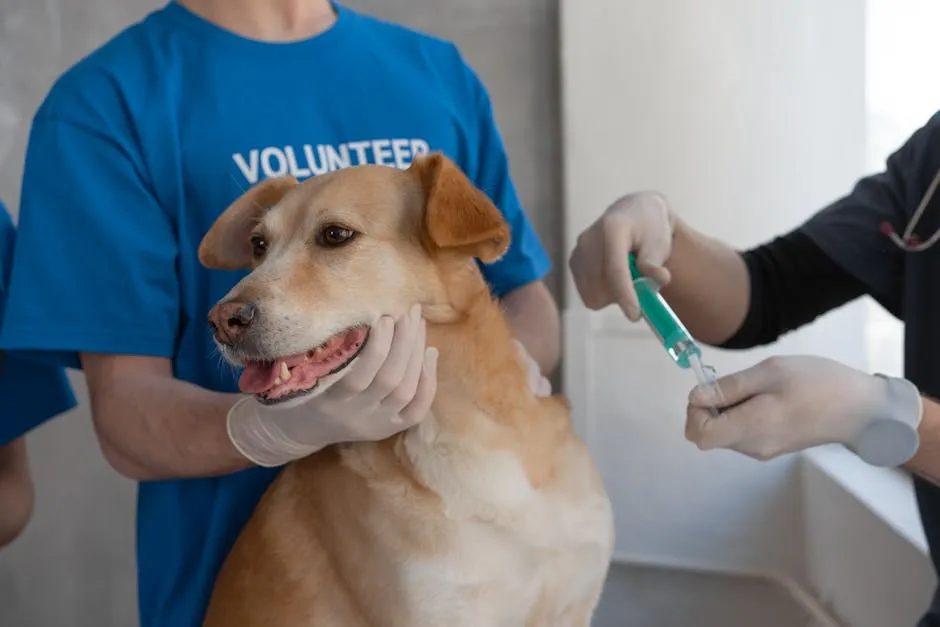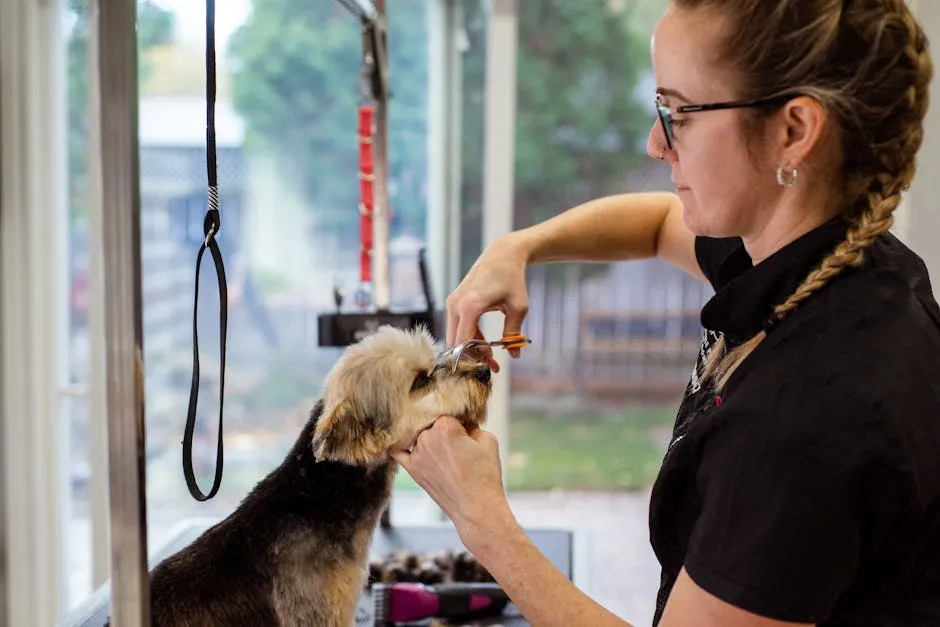Introduction
Flea and tick prevention is crucial for your dog’s health. These pesky parasites can lead to serious health issues. Fleas cause itching and discomfort, while ticks can transmit dangerous diseases. Therefore, keeping your dog protected is essential. Oral medications, like flea and tick pills, are a primary method of prevention. They offer convenience and effective control against these pests.
Consider using NexGard Flea and Tick Chewables for Dogs. These tasty chewables are not just easy to administer but also work quickly to keep your pup flea-free. Imagine the relief of no more scratching and discomfort for your furry friend!

Summary and Overview
Flea and tick pills are easy to administer and highly effective. These oral medications work quickly to eliminate existing pests and prevent future infestations. Timely administration is key for optimal effectiveness. Always consult your veterinarian before starting any medication. They can recommend the best options for your dog’s specific needs. Chewable pills are becoming increasingly popular among pet owners due to their palatability and ease of use.
For more information on common health issues and their management, check out this article on dog health issues.
Additionally, you might want to explore Simparica Flea and Tick Control for Dogs. This fantastic option not only protects against fleas and ticks for up to 35 days but also comes in a flavor that dogs love. Say goodbye to the struggle of getting them to take their medicine!

Understanding Fleas and Ticks
What Are Fleas and Ticks?
Fleas and ticks are ectoparasites that thrive on blood. Fleas are small, jumping insects that reproduce rapidly. A female flea can lay thousands of eggs, leading to widespread infestations. Ticks, on the other hand, are arachnids. They attach to dogs and feed on their blood, posing a greater threat due to disease transmission.
Fleas often cause irritation, leading to scratching and skin infections. They can also carry tapeworms, which can infect your dog. Ticks can transmit various vector-borne diseases, such as Lyme disease and Rocky Mountain spotted fever.
Statistics show that a significant number of dogs will experience flea or tick infestations at some point. Regular preventative treatments are essential to protect your furry friend from these harmful parasites.

Signs of Infestation
Recognizing Fleas on Dogs
Is your dog scratching more than usual? Fleas could be the culprit. Look for signs like red, irritated skin, and hair loss. You might also notice flea dirt, which looks like tiny black specks in your dog’s fur. These signs indicate an infestation and can lead to flea allergy dermatitis, causing even more discomfort. Early detection is essential. By identifying fleas early, you can prevent serious health issues and keep your dog happy and healthy. Regular grooming and checks help spot these pesky parasites before they become a bigger problem.

Recognizing Ticks on Dogs
Ticks often hide in your dog’s fur, making them tricky to spot. Look for physical signs like swelling or irritation at the attachment site. Regular checks are vital, especially after outdoor adventures. Ticks can transmit serious diseases like Lyme disease and anaplasmosis. These diseases can lead to severe health issues if left untreated. If you find a tick, remove it carefully using proper tools. Always consult your vet for a follow-up, especially if you notice any unusual symptoms. Regular veterinary check-ups also help catch any potential tick-borne diseases early.

Popular Brands and Products
When it comes to flea and tick pills for dogs, some brands stand out for their effectiveness and customer satisfaction. Let’s look at three top recommendations: NexGard, Simparica, and Bravecto.
NexGard is a chewable tablet that contains afoxolaner. It works quickly, killing fleas and ticks within hours. This product lasts for a full 30 days and has received high ratings for its palatability, making it easy for dogs to take. Many owners report noticeable improvements in their dog’s comfort after starting treatment. For more details, check out our guide on nexgard for dogs.
Simparica is another excellent choice. It combines sarolaner with a tasty formulation. This pill also provides protection against fleas and ticks for up to 35 days. Users praise its effectiveness and appreciate that it’s safe for puppies older than six months. Its fast-acting formula makes it a reliable option. For further insights, refer to our comprehensive guide on simparica trio for dogs.

Another fantastic product is Bravecto Chewable Tablets for Dogs. This unique treatment offers up to 12 weeks of protection, making it a convenient option for busy pet owners. With fewer doses required, you can spend less time worrying about flea and tick control and more time enjoying your dog’s company!
When choosing a product, consider factors like effectiveness, duration of protection, and your dog’s preferences. Customer reviews often reflect positive experiences, which can help guide your choice. Pricing varies, but all three brands are widely available at pet supply stores and online retailers.
Administration and Dosage
Administering flea and tick pills to your dog may seem challenging, but it can be straightforward with the right approach. Always follow the dosage instructions provided by your veterinarian or the product label for safety.
To make the pills more palatable, try hiding them in a treat or using a pill pocket. Many dogs are more willing to take their medication this way. If your dog resists, gently but firmly hold their mouth closed, then stroke their throat to encourage swallowing.
Watch for signs of adverse reactions after administration. Common signs include vomiting, diarrhea, or unusual lethargy. If any of these occur, consult your veterinarian immediately. Consistency is crucial; administer the medication on the same day each month to maintain effectiveness. This routine helps keep your dog protected, ensuring they stay comfortable and healthy throughout the year.

Consultation with a Veterinarian
Before starting any flea and tick medication for your dog, it’s crucial to consult with a veterinarian. They can provide professional guidance tailored to your pet’s specific needs. Factors like age, weight, and existing health conditions play a significant role in determining the right treatment.
Veterinarians can also identify potential interactions with other medications your dog may be taking. For instance, some flea and tick treatments may not be suitable for dogs with certain health issues. This personalized care ensures your pet receives the most effective and safe option for flea and tick prevention.
By consulting a vet, you can customize a flea and tick prevention strategy that fits your dog’s lifestyle and health profile. Ensuring your furry friend’s well-being starts with informed decisions.

Prevention and Maintenance
Best Practices for Flea and Tick Prevention
Preventing flea and tick infestations requires a proactive approach. Here are some best practices:
- Regular Bathing and Grooming: Bathing your dog regularly helps remove any fleas or ticks. Combine this with brushing to check for any signs of these pests.
- Home Treatments: Vacuum your home frequently to eliminate flea eggs and larvae. Consider using flea sprays or powders in areas where your dog spends time.
- Yard Maintenance: Keep your yard tidy by mowing the lawn and trimming bushes. This makes the environment less inviting for ticks and fleas.
- Preventive Products: Utilize flea collars, topical treatments, or sprays to provide additional protection. Consider a Flea and Tick Prevention Collar for Dogs to create a protective barrier against infestations.
- Regular Vet Check-ups: Schedule routine veterinary visits to monitor your dog’s health and adjust their flea and tick prevention strategy as needed.
By implementing these practices, you can significantly reduce the risk of flea and tick infestations, ensuring a healthier, happier pet.

Year-Round Protection
Flea and tick prevention is crucial all year, not just during warmer months. Climate can significantly impact flea and tick populations. Even in winter, these pests can survive indoors or in mild areas. They thrive in various environments, making consistent prevention essential.
Using flea and tick pills year-round offers multiple benefits. It helps maintain a barrier against infestations and reduces the risk of disease transmission. Regular treatment ensures your dog stays comfortable and free from irritating bites. Consistent medication simplifies care, allowing you to focus on enjoying time with your furry friend. With year-round protection, you can prevent future problems and keep your dog happy and healthy.

Conclusion
Using flea and tick pills for dogs is vital for their health. These medications effectively control pesky parasites, preventing discomfort and serious diseases. Regular veterinary check-ups are essential to ensure the right treatment plan. Following the prescribed schedule improves effectiveness and keeps your pet safe.
Stay informed about your pet’s health needs and proactive in prevention measures. Remember, a little effort now can save you from significant issues later. Keep your dog protected, and they will thank you with wagging tails and happy barks.

FAQs
What are the most common signs of flea infestation in dogs?
Look for excessive scratching, skin irritations, and flea dirt. Flea dirt appears as tiny black specks in your dog’s fur.
How often should I administer flea and tick pills to my dog?
Frequency varies by product. Generally, monthly administration is recommended for most oral medications.
Are flea and tick pills safe for puppies?
Yes, but age and weight considerations are essential. Consult your vet to ensure the right product for your puppy.
Can I use flea and tick pills in conjunction with other treatments?
Yes, but consult your veterinarian first. They can advise on potential interactions and recommend the best approach.
What should I do if I notice a tick on my dog after treatment?
Remove the tick carefully using proper tools. Monitor your dog for any unusual symptoms and consult your vet if needed.
Do flea and tick pills protect against diseases?
Yes, these medications help prevent disease transmission by killing fleas and ticks before they can bite and infect your dog.
Please let us know what you think about our content by leaving a comment down below!
Thank you for reading till here 🙂
All images from Pexels





